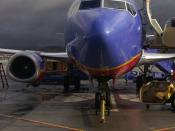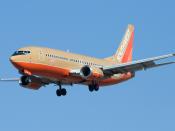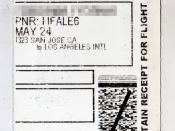Southwest Airlines began operating in 1971 with only four planes and serving three cities. Now they have over 2100 flights per day, carry over 44 million passengers a year, and are the fifth largest airline company in America (Southwest Airlines, 2004). In their 33 years of business they have been awarded numerous awards for the best airline in the business, and are currently the highest profit showing company in the industry (Stanley, 2003). Much of Southwest Airlines' success is due to their organizational strategic planning. In this paper we will analyze the SWOTT analysis (strength, weaknesses, opportunities, threats, and trends) (Bateman and Snell, 2003) factors that influence the organizational strategic planning process at Southwest Airline, which has helped them grow and become the most profitable airline in America (Barrett, 2004). Our analysis will include marketing strategies, no first class services, their employee incentive program, losses in their market, and E-business at Southwest Airlines.
Strength
Due to Southwest's strong strategic planning team, they are the only major airline to make a profit during this years' second quarter (Torbenson, 2004). This is partly due to a contract signed between Southwest and their fuel distributor. Southwest was able to "hedge" (buy fuel in advance at a set price) more than 80 percent of their jet fuel requirements (Southwest Airlines, 2004). Although it costs "upfront" money to hedge, they were able to reduce their fuel costs by $171 million in 2003 and $63 million in first quarter 2004, and their hedging program is in effect for 2005 (Barrett, 2004).
Another strength in Southwest's strategic planning, which reduces costs and saves money, is the installation of blended winglets to their 737-700 aircraft. This will result in a three to four percent annual reduction in fuel use per...


